How To Generate More Leads From Your Website
What is a Lead?
A lead is a person who has indicated interest in your company's product or service in some way, shape, or form.
As a lead, you'd hear from a business or organisation with which you've already opened communication instead of getting a random cold call from someone you don’t know who purchased your contact information.
For example, maybe you took an online survey to learn more about how to take care of your car. If you got an email from the company that hosted the survey on
their website about how they could help you take care of your car, it'd be far less intrusive and irrelevant than if they'd just called you out of the blue with no knowledge of whether you even care about car maintenance, right?
And from a business perspective, the information the company collected about you from your survey responses helps them personalise that opening communication to address your existing problems.
What is Lead Generation?
Lead generation is the process of attracting and converting strangers and prospects into someone who has indicated interest in your company's product or service.
Some examples of lead generators are job applications, blog posts, coupons, live events, and online content.
Whenever someone outside the marketing world asks me what I do, I can't simply say, "I create content for lead generation." It'd be totally lost on them, and I'd get some really confused looks.
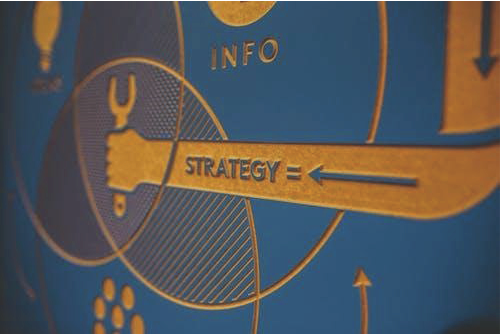
So instead, I say, "I work on finding unique ways to attract people to my business. I want to offer them enough free information to get them naturally interested in my company so they eventually warm up to the business enough to want to hear from us!"
That usually resonates better, and that's exactly what lead generation is: It's a way of warming up potential customers to your business and getting them on the path to eventually buying.
How to GENERATE Leads for Your Business
Now that we understand how lead generation fits into the whole inbound marketing methodology, let's walk through the steps of the lead generation process.
First, a visitor discovers your business through one of your marketing channels, such as your website, blog, or social media page.
That visitor then clicks on your call-to-action (CTA) — an image, button, or message that encourages website visitors to take some sort of action.
The CTA takes your visitor to a web page designed to get contact details of potential customers in exchange for an offer.
An offer is the content or something of value like an ebook, checklist, webinar or a template. The offer must have enough perceived value to a visitor to merit providing their personal information in exchange for access to it.
We have produced a separate guide all about creating these types of offers – download that here. (This is an example of a call-to-action!)
The form on your landing page collects information in exchange for the offer. Once a visitor fills this out — voila! — you have a new lead!
Once you put all these elements together, you can start driving potential customers ("traffic") to your landing page to start generating leads.
But how should you promote your landing page? Let’s talk about the front-end of lead generation — lead generation marketing.
If you’re a visual learner, this chart shows the flow from promotional marketing channels to an interested customer, or generated lead.
There are even more channels you can use to get visitors to become leads. Let’s go into depth on these and talk about a few others.

Content Marketing
Content is useful, free information - whether an e-book, a blog post, a video, or an infographic, content is a great way to guide users to your website so they can start to get to know your business and what you can offer them. The more delighted a visitor is with your content, the more likely they are to trade contact details in exchange for more content.

Google Ads (PPC) and Remarketing
The sole purpose of an ad is to get people to take an action. Otherwise, why spend the money? If you want people to convert, be sure that your website matches exactly what is promised in the ad, and that the action you want users to take is clear.
Email Marketing
Email is a great place to reach the people who already know your brand and product or service - these are the people who have already given you their email address in exchange for content. It’s much easier to ask them to sell to them since they’ve already shown interest in your business.

Blogging
The great thing about using your blog posts to
promote an offer is that you can tailor the entire
piece to the end goal. So, if your offer is an
instructional video on setting up Google Search
Console, then you can write a blog post about
how to select your marketing metrics ... which
would make your video, or CTA, highly relevant
and easy to click.
Social Media Marketing
Social media platforms such as Facebook and LinkedIn make it easy to guide your followers to take action. You can also promote your offerings on your social media posts and include a call-to-action in your caption.
Product Trials
You can break down a lot of barriers to a sale by offering trials of your product or service. Once a prospect is using your product, you can entice them with added offers or resources to encourage them to buy. Another good practice is to include your branding in your free versions so you can capture other potential customers, too.
Why Not Just Buy Leads?
Marketers and salespeople alike want to get leads— and they want to get them quickly.
The temptation to buy leads. Buying leads, as opposed to getting them naturally, is much easier and takes far less time and effort, despite being more expensive. But you might be paying for advertising anyway ... so, why not just buy leads?
First, any leads you've purchased don't actually know you. Typically, they've "opted in" at some other site when signing up for something, and didn't actually opt in to receiving anything from your company.
The messages you send them are therefore unwanted messages, and sending unwanted messages is intrusive.

If the prospect has never been to your website and indicated an interest in your products, or services, then you’re interrupting them.
If they’ve never opted in to receive messages from you, then there’s a high
chance they could flag your message as spam, which isn’t good for business.
It’s always better to generate leads organically than to buy them.
How to Identify and Qualify Leads
As we covered in the first section, a lead is a person who has indicated interest in your company's product or service. Now, let's talk about the ways in which someone can actually show that interest.
Essentially, a sales lead is generated through information collection. That information collection could come as the result of a job seeker showing interest in a position by completing an application, a shopper sharing contact information in exchange for a discount code, or a person filling out a form to download an educational piece of content.
Read more in our article 'How to qualify leads & avoid wasting time'
Gauging a Lead’s Level of Interest
Below are just a few of the many ways in which you could qualify someone as a lead. Each of these examples shows that the amount of collected information used to qualify a lead, as well as the lead level of interest, can vary. Let's assess each scenario:
Job Application: An individual that fills out an application form is willing to share a lot of personal information because he/she wants to be considered for a position.
Filling out that application shows their true interest in the job, therefore qualifying the person as a lead for the company's recruiting team — not marketing or sales teams.

Discount Code: Unlike the job application, you probably know very little about someone who has stumbled upon one of your online discount codes.
But if they find the discount valuable enough, they may be willing to give you their name and email address in exchange for it. Although it's not a lot of information, it's enough for a business to know that someone has interest in their company.
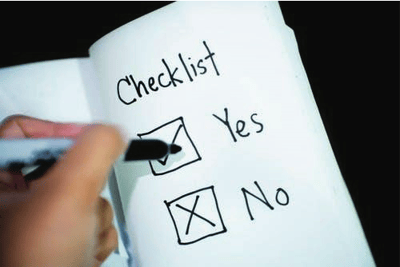
Content: While signing up for a discount code shows an individual has a direct interest in your product or service, content (like an educational ebook or webinar) doesn’t.
So to truly understand the nature of the person's interest in your business, you'll probably need to collect more information to decide whether the person is interested in your product or service and whether they're a good fit.
These three general examples highlight how lead generation differs from company to company, and from person to person. You'll need to collect enough information to gauge whether someone has a true, valid interest in your product or service — how much information is enough information will vary depending on your business.
Lead Generation Benchmarks and Trends
So ... you're getting web traffic and generating leads. But how are you doing compared to other companies in your industry? How many leads should you really be generating?
Did you know that 70% of companies not achieving their revenue goals generate fewer than 100 leads per month, and only 5% generate more than 2,500 leads per month?
Leads Generated per month, by annual revenue
Unsurprisingly, the more revenue a company has, the more leads they generate. The differences are most drastic at the highest and lowest end of the spectrum:
82% of companies with £150,000 or less in annual revenue report generating less than 100 leads per month, whereas only 8% of companies generating £70m+ in annual revenue report less than 100 leads per month.
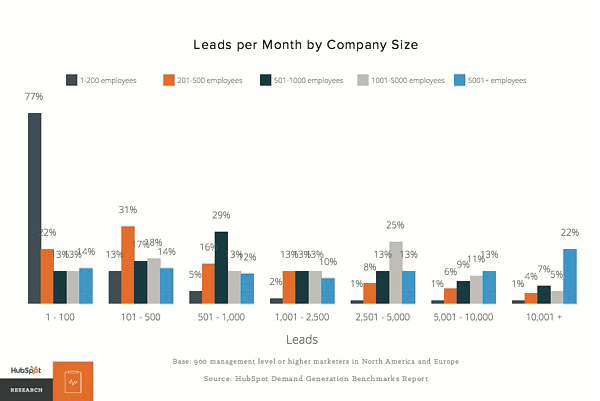
Lead Generation Strategies
Online lead generation encompasses a wide range of tactics, campaigns, and strategies. We talked about lead capture once you have a visitor on your site ... but how can you get them there in the first place?
Let’s dive into lead generation strategies for a few popular platforms.
Social Media Lead Generation
Facebook, LinkedIn and Twitter have been methods for lead generation since its start. Facebook created lead ads which you can run in your Facebook Advertising, and also has a feature that lets you put a simple call-to-action button at the top of your Facebook page, helping you send Facebook followers directly to your website. Twitter lets you generate leads within one quick Tweet, and LinkedIn created lead generation forms specifically for getting potential lead contact information as part of running LinkedIn Advertising.


Google Ads/PPC Lead Generation
When we say pay-per-click (PPC), we’re referring to ads on search engine result pages. These are paid for by you, and a PPC advert places your business near the top of a search page, if someone is looking for your services.
Google gets 3.5 billion searches a day, making it prime real estate for any ad campaign, especially lead generation. The effectiveness of your PPC campaign relies on things such as your budget, search words that your website and your customers have in common, and a few other factors.

Tips for Lead Generation Campaigns
In any given lead generation campaign, there can be a lot of moving parts. It can be difficult to tell which parts of your campaign are working and which need some fine-tuning.
What exactly goes into a best-in-class lead generation engine? Here are a few tips when building lead generation campaigns.
Use the right tools
The most successful marketing teams use a formal system to organise and store their leads. That's where lead generation tools and lead generation software come into play.
How much do you know about the people visiting your website? Do you know their names or their email addresses? How about which pages they visited and what they do before and after filling out a form that gives you their contact information?
If you don't know the answers to these questions, chances are you're having a hard time connecting with the people who are visiting your site. These are questions you should be able to answer — and you can with the right lead generation tools.
Create amazing offers for all stages
Not all your site visitors are ready to talk to your sales team or see a demo of your product. Someone at the beginning of the buyer's journey might be interested in an informational piece of content like an ebook or a guide, whereas someone who's more familiar with your company and almost ready to buy might be more interested in a free trial or demo.
Make sure you're creating offers for each phase and offering CTAs for these offers throughout your site.
Yes, it takes time to create valuable content that educates and makes a great impression, but if you don't offer anything for visitors who aren't ready to buy, then they may never come back to your website.
It's important to look at content as an investment - a few hours of your time today, for years’ worth of interest from potential customers.

Keep your messaging consistent and deliver on your promise
The most successful lead generation campaigns are the ones that deliver on what they promise. Make sure that you’re presenting a consistent message throughout your content and advertising, and providing value to everyone that lands on your website.
Your campaign should be about more than just obtaining an email address — it should be about developing a new customer. Think about what would impress that customer, and then mirror your website to reflect that.
Link your CTA to a dedicated page
This may seem obvious to you, but you'd be surprised how many marketers don't create dedicated pages for their offers. CTAs are meant to send visitors to a landing page where they can receive a specific offer.
Don't use CTAs to drive people to your homepage, for instance. Even if your CTA is about your brand or product (and perhaps not an offer like a download), you
should still be sending them to a targeted landing page that's relevant to what they are looking for and includes an opt-in form. If you have the opportunity to use a CTA, send them to a page that will convert them into a lead.
Use social media strategically
Every time a person lands on your Facebook, Twitter, or LinkedIn, you can capture their interest - or not. Make the most of that opportunity and enhance your social media accounts.
Start by adding links directly to the landing pages of successful offers within your Facebook, Twitter, LinkedIn, and other social media posts. Tell visitors that you're sending them to a landing page. That way, you're setting expectations.
Lead Generation Done For You By JDR Group
The JDR Group is a specialist digital marketing agency founded in 2004. We can set up, manage and optimise lead generation campaigns for your business, and there’s a lot more we can do to help you attract, win, keep and grow customers.
About us and how we’re different to other agencies
Unlike many marketing agencies, which come from a design, web development or advertising background, our background is in business coaching. Our objective as business coaches was to mentor business owners and directors to achieve better results for their companies – something we still do today.
Business coaching includes marketing, but also extends to leadership and people management, time management, administration and sales training.
This background gives us an understanding of how businesses work as complete organisations, not just marketing. While providing the latest inbound marketing support and strategies, we also go beyond marketing to understand the challenges and opportunities faced by your business – and by you personally as a business owner or director. We know what it’s like to be a company director, the difficulties of running a successful business and balancing the demands of customer service and expansion. The key to success is a dynamic marketing strategy based on your unique strengths and the opportunities available in your sector.
Our 6-step marketing system
We are often asked 'what's the one thing we should do to attract more customers?' The answer is simple: there isn't one.
There is no single tactic or strategy that will transform your business - what you need is a SYSTEM.
JDR’s 6-step marketing system is the product of more than 15 years of experience running marketing campaigns for small and medium sized businesses. We have seen that:
- Redesigning your website will not increase your sales or revenue
- SEO or Google Ads will not grow your sales alone
- Social Media promotion will not grow your business either
For any of these ‘tactics’ to work, they need to be part of an overall system and part of a strategy.
THE FOUNDATION - AN EFFECTIVE WEBSITE
Your website is your single most important marketing asset, and will be used by prospective customers, existing customers, potential and existing employees and partners/suppliers.
Almost all your sales and marketing activity will result in people going to the website first before they contact you, and if your website doesn’t work well, all of your marketing becomes less effective and more expensive. Your website can also be a saleable and valuable business asset that adds value to your company.
At a minimum level, your website should look credible and professional, and be built on a content management system that makes it possible to easily update and change the layout and content including adding new pages.
While we look to work with your existing site if at all possible, it may be that we need to build a new one in order to get best results from your marketing.
STEP 1: STRATEGY & PLANNING
A strategy is the foundation of any good marketing campaign, and as with the building, the deeper and stronger that foundation, the bigger the building.
Lack of strategy and planning is the main reason why marketing campaigns fail. If you want to get a return on investment from marketing, you need a clear, well thought out strategy.
STEP 2: REGULAR CONTENT & ARTICLES WRITTEN FOR YOU
Based on the strategy, our team will plan designed to attract and engage your ideal customers. This content can include videos, infographics, animations, eBooks, webinars, blog posts, research papers and much more.
Publishing regular articles and content is the most reliable way to grow website traffic in a sustainable, long term way. It improves your website’s search engine
rankings, helps you get found for more and more keyword searches in Google, builds your credibility, and establishes you as the expert and as the ‘go-to’ business in your field.
STEP 3: INCREASE WEBSITE TRAFFIC
Relying on one major source of traffic is risky – we believe in building multiple streams of traffic to your website. If you are reliant on one single source of new leads/customers, for example Facebook ads, then you are at risk of Facebook making a sudden change that means your leads dry up overnight.
With multiple traffic sources you have more stale, secure results and you also benefit from prospects seeing you in several places.
Our team of SEO, Google Ads/pay-per-click, social media and email marketing experts can ensure you get found by your ideal customers.
STEP 4: CONVERT VISITORS INTO LEADS
Just having a nice website and sending traffic to it might get a response but it won’t be enough on its own to ensure your marketing gets a return on investment. There has to be a conversion strategy for your website visitors, so that you get the highest possible number of leads, enquiries and sales.
STEP 5: CONVERT LEADS INTO SALES
Busy salespeople and directors often only deal with the most urgent/interested prospects or opportunities, and when they do, it is usually with no defined sales system or process. Improving follow up and your sales process has a direct benefit on your bottom line and makes every form of marketing you do more effective.
STEP 6: TEST, MEASURE & ANALYSE
With all of our clients we set up systems to track:
- Where your website traffic comes from
- Where every single lead, enquiry and sale comes from
- What happens to every single lead and enquiry – which ones convert, and which ones don’t
This allows us to see what is working and what isn’t, and as part of any marketing campaign we run tests - and analyse and measure the results for you.
This ongoing testing, measurement and analysis of sales and marketing lead to improved results, less wasted budget, and more confidence in your decisions about sales and marketing.
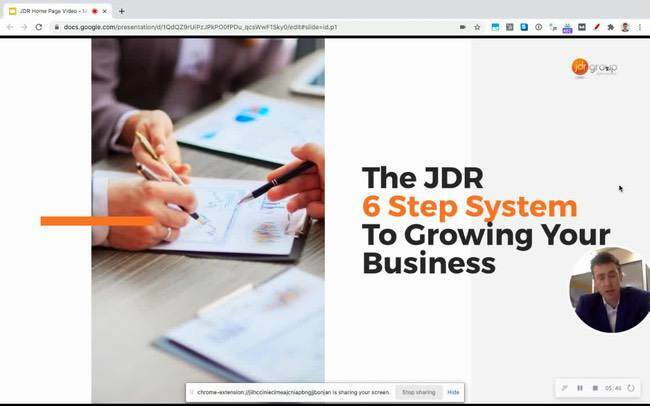
Find out more
- Find out more and get a FREE website and marketing review
- See the full range of our services plus case studies and reviews on our website
- Speak to a member of our team by calling: +44 (0) 1332 343 281
- Email general enquiries to: info@jdrgroup.co.uk
3 Ways To Learn More:
1. Book a Call
Want to find out how JDR Group can help your
business? The first step is a free, no obligation
conversation with Andy Gibbins.
2. Get a Free Marketing Audit
Arrange a short call with our expert Andy Gibbins
where we can offer a free marking review plus a 16
page marketing report you can keep!
3. Subscribe to Our Blog
Subscribe to our blog and get our best content in
your inbox. Every week, we provide you with our
best insights and tips & tricks to help you improve
your marketing strategy
The Author
Andy Gibbins
Business Development manager and Online Marketing expert at the JDR Group. Andy has over 11 years experience working with SME's on their sales and marketing strategies. An Advertising & Brand Management Graduate, Andy has helped develop successful marketing strategies for our clients across a range of different industries. He is also an experienced CRM and Marketing Automation software consultant.
Let's Talk - Book A Call
To find out more, let’s start a conversation - you can book a call with one of our experts using our online diary link.
There’s no cost and we can provide some free initial advice as well as discuss your options with you.




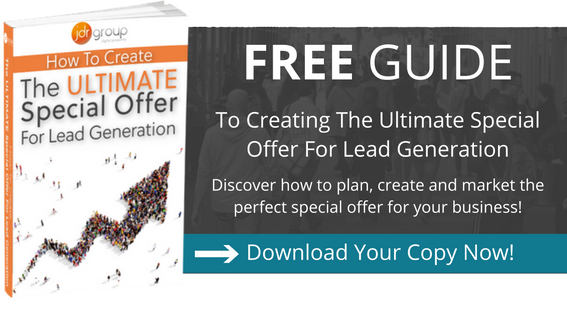
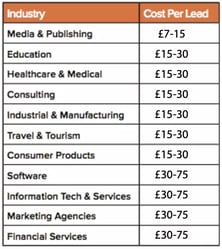
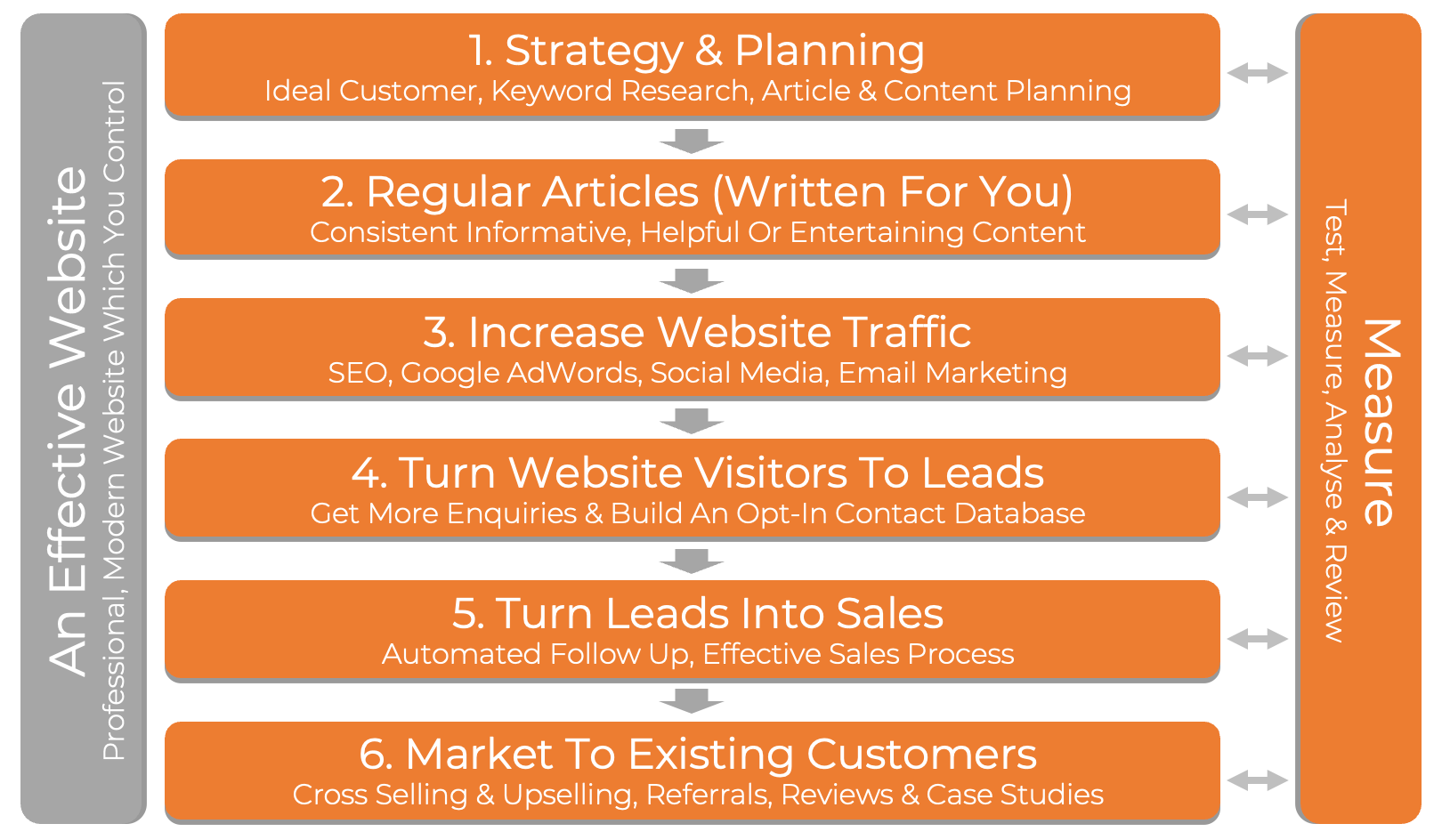



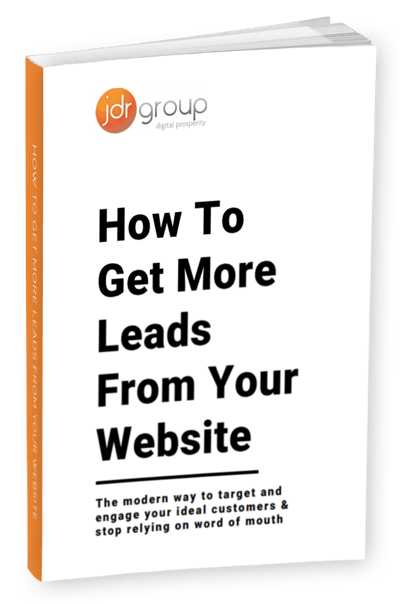


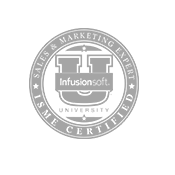
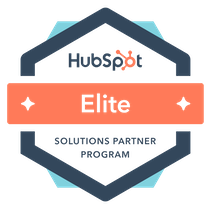
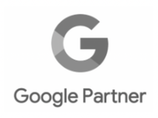

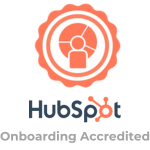
 How To Attract, Win, Keep & Grow Customers Guide
How To Attract, Win, Keep & Grow Customers Guide